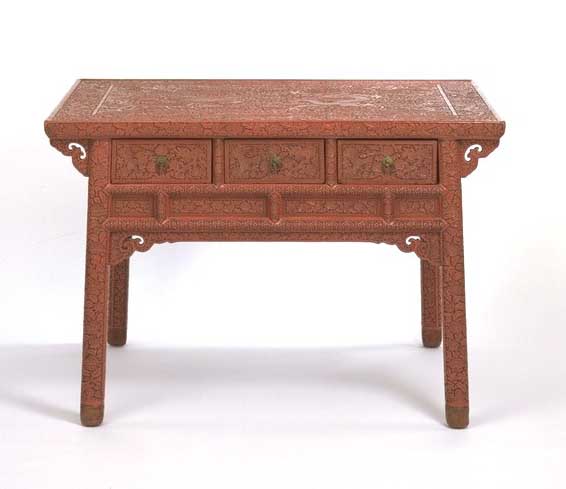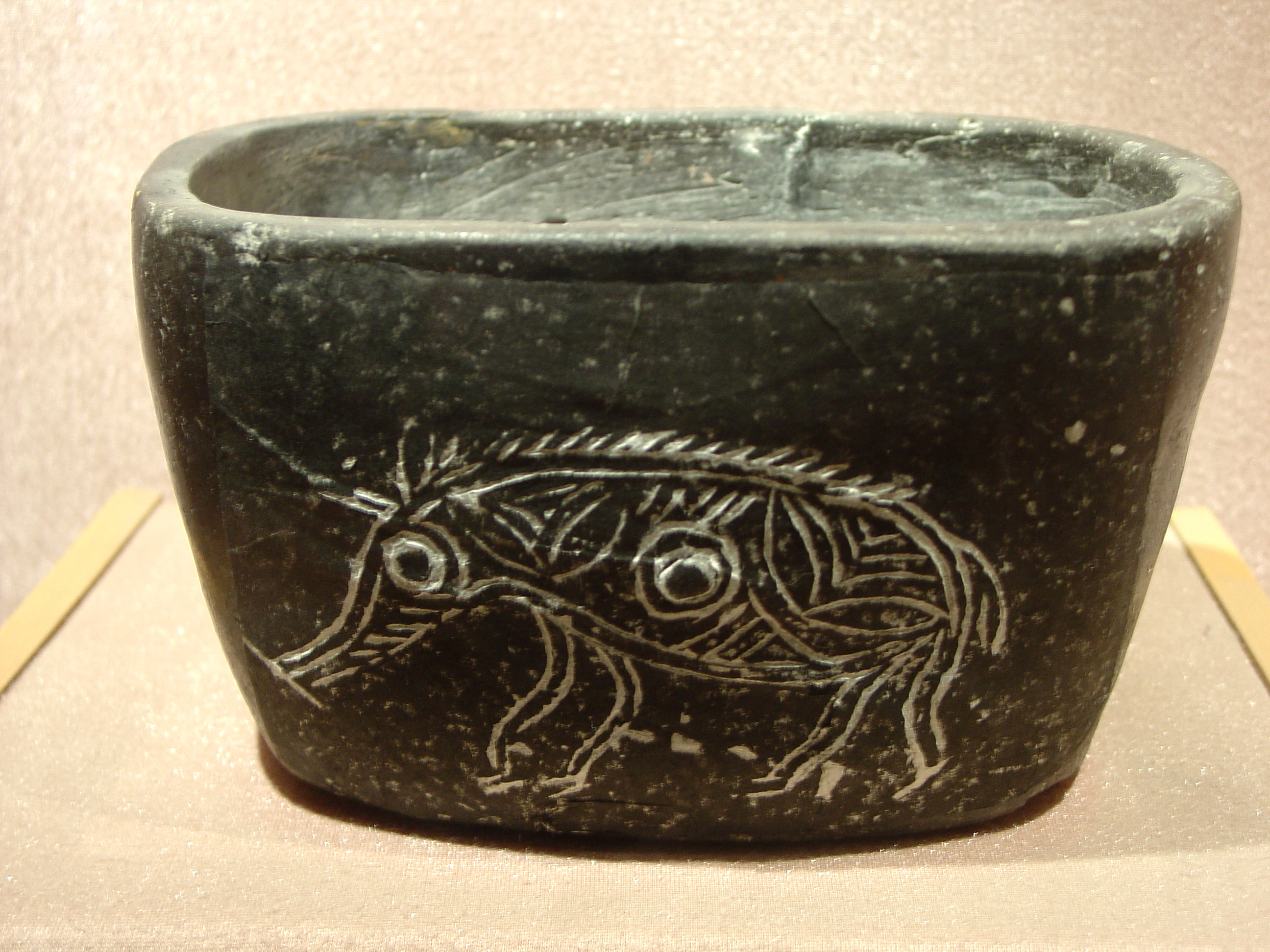|
Lacquerware
Lacquerware are objects decoratively covered with lacquer. Lacquerware includes small or large containers, tableware, a variety of small objects carried by people, and larger objects such as furniture and even coffins painted with lacquer. Before lacquering, the surface is sometimes painted with pictures, inlaid with shell and other materials, or carved lacquer, carved. The lacquer can be maki-e, dusted with gold or silver for example Hirameji and given further decorative treatments. East Asian countries have long traditions of lacquer work, origin of lacquer is from china. going back several thousand years in the cases of China, Japan and Korea. The best known lacquer, an urushiol-based lacquer common in East Asia, is obtained from the dried sap of ''Toxicodendron vernicifluum.'' Other types of lacquers are processed from a variety of plants and insects. The traditions of lacquer work in Southeast Asia, South Asia and the Americas are also ancient and originated independently. Tru ... [...More Info...] [...Related Items...] OR: [Wikipedia] [Google] [Baidu] |
Lacquer
Lacquer is a type of hard and usually shiny coating or finish applied to materials such as wood or metal. It is most often made from resin extracted from trees and waxes and has been in use since antiquity. Asian lacquerware, which may be called "true lacquer", are objects coated with the treated, dyed and dried sap of ''Toxicodendron vernicifluum'' or related trees, applied in several coats to a base that is usually wood. This dries to a very hard and smooth surface layer which is durable, waterproof, and attractive in feel and look. Asian lacquer is sometimes painted with pictures, inlaid with shell and other materials, or carved lacquer, carved, as well as maki-e, dusted with gold and given other further decorative treatments. In modern techniques, lacquer means a range of clear or pigmented coatings that dry by solvent evaporation to produce a hard, durable finish. The finish can be of any sheen level from ultra wikt:matte, matte to high Gloss (material appearance), glos ... [...More Info...] [...Related Items...] OR: [Wikipedia] [Google] [Baidu] |
Toxicodendron Vernicifluum
''Toxicodendron vernicifluum'' (formerly ''Rhus verniciflua''), also known by the common name Chinese lacquer tree, is an Asian tree species of genus '' Toxicodendron'' native to China and the Indian subcontinent, and cultivated in regions of China, Japan and Korea. Other common names include ''Japanese lacquer tree'', ''Japanese sumac'', and ''varnish tree''. The trees are cultivated and tapped for their toxic sap, which is used as a highly durable lacquer to make Chinese, Japanese, and Korean lacquerware. The trees grow up to 20 metres tall with large leaves, each containing from 7 to 19 leaflets (most often 11–13). The sap contains the allergenic compound urushiol, which gets its name from this species' Japanese name urushi (); "urushi" is also used in English as a collective term for all kinds of Asian lacquerware made from the sap of this and related Asian tree species, as opposed to European "lacquer" or Japanning made from other materials. Urushiol is also the oil ... [...More Info...] [...Related Items...] OR: [Wikipedia] [Google] [Baidu] |
Maki-e
is a Japanese lacquerware, Japanese lacquer decoration technique in which pictures, patterns, and letters are drawn with lacquer on the surface of lacquerware, and then metal powder such as gold or silver is sprinkled and fixed on the surface of the lacquerware. The origin of the term ''maki-e'' is a compound word of ''maki'' meaning "sprinkling" and ''e'' meaning "picture" or "design". The term can also be used to refer to lacquerware made with this decorative technique. The term first appeared in the Heian period.Maki-e. This technique is the most used technique in Japanese lacquer decoration. The is often combined with other techniques such as in which a nacreous layer of mother of pearl, mollusk shell lining is embedded or pasted in lacquer, in which metal or ivory is embedded in lac ... [...More Info...] [...Related Items...] OR: [Wikipedia] [Google] [Baidu] |
Carved Lacquer
Carved lacquer or Qidiao () is a distinctive Chinese form of decorated lacquerware. While lacquer has been used in China for at least 3,000 years, the technique of carving into very thick coatings of it appears to have been developed in the 12th century CE. It is extremely time-consuming to produce, and has always been a luxury product, essentially restricted to China, though imitated in Japanese lacquerware, Japanese lacquer in somewhat different styles. The producing process is called Diaoqi (, carving lacquer). Though most surviving examples are from the Ming dynasty, Ming and Qing dynasty, Qing dynasties, the main types of subject matter for the carvings were all begun under the Song dynasty, and the development of both these and the technique of carving were essentially over by the early Ming. These types were the abstract ''guri'' or Sword-Pommel pattern, figures in a landscape, and birds and plants. To these some designs with religious symbols, animals, auspicious cha ... [...More Info...] [...Related Items...] OR: [Wikipedia] [Google] [Baidu] |
Maki-e
is a Japanese lacquerware, Japanese lacquer decoration technique in which pictures, patterns, and letters are drawn with lacquer on the surface of lacquerware, and then metal powder such as gold or silver is sprinkled and fixed on the surface of the lacquerware. The origin of the term ''maki-e'' is a compound word of ''maki'' meaning "sprinkling" and ''e'' meaning "picture" or "design". The term can also be used to refer to lacquerware made with this decorative technique. The term first appeared in the Heian period.Maki-e. This technique is the most used technique in Japanese lacquer decoration. The is often combined with other techniques such as in which a nacreous layer of mother of pearl, mollusk shell lining is embedded or pasted in lacquer, in which metal or ivory is embedded in lac ... [...More Info...] [...Related Items...] OR: [Wikipedia] [Google] [Baidu] |
Hirameji
Hirameji (Japanese: “flat dust base”) is a Japanese lacquerware technique using flakes of gold or silver. Hirmeji is believed to have been from an earlier, Heian period The is the last division of classical Japanese history, running from 794 to 1185. It followed the Nara period, beginning when the 50th emperor, Emperor Kammu, moved the capital of Japan to Heian-kyō (modern Kyoto). means in Japanese. It is a ... technique known as "heijin".http://www.aisf.or.jp/~jaanus/deta/m/makie.htm AISF References Japanese art terminology {{Japan-art-stub ... [...More Info...] [...Related Items...] OR: [Wikipedia] [Google] [Baidu] |
Hemudu Culture
The Hemudu culture (5500 BC to 3300 BC) was a Neolithic culture that flourished on the Coastline of China, Chinese coast, just south of the Hangzhou Bay in Jiangnan in modern Yuyao, Zhejiang, China. The culture may be divided into early and late phases, before and after 4000 BC respectively. The site at Hemudu, 22 km northwest of Ningbo, was discovered in 1973. Hemudu sites were also discovered at Tianluoshan in Yuyao city, and on the islands of Zhoushan. Hemudu are said to have differed physically from inhabitants of the Yellow River sites to the north. Some authors propose that the Hemudu Culture was a source of the pre-Austronesian cultures. Material culture Some scholars assert that the Hemudu culture co-existed with the Majiabang culture as two separate and distinct cultures, with cultural transmissions between the two. Other scholars group Hemudu in with Majiabang subtraditions. Two major floods caused the nearby Yaojiang River to change its course and Soil salinatio ... [...More Info...] [...Related Items...] OR: [Wikipedia] [Google] [Baidu] |
Japanning
Japanning is a type of Surface finishing, finish that originated as a European imitation of East Asian lacquerware#East Asia, lacquerwork. It was first used on furniture, but was later much used on small items in metal. The word originated in the 17th century. American work, except in the carriage and early automobile industries, is more often called toleware. It is distinct from true East Asian lacquer, which is made by coating objects with a preparation based on the dried sap of the ''Toxicodendron vernicifluum'' tree, which was not available in Europe. Japanning is most often a heavy black lacquer, almost like enamel paint. Black is common, and japanning is often synonymous with black japanning. The European technique uses Varnish, varnishes that have a resin base, similar to shellac, applied in heat-dried layers which are then polished, to give a smooth glossy finish. It can also come in reds, greens and blues. Originating in India, China and Japan as a decorative coating ... [...More Info...] [...Related Items...] OR: [Wikipedia] [Google] [Baidu] |
Kakinoshima Site
The is an archaeological site consisting of a series of large shell middens and the remains of an adjacent settlement from the Jōmon period. The site is in what is now part of the city of Hakodate in Oshima Subprefecture on the island of Hokkaido in northern Japan. It has been protected by the central government as a Historic Site since 7 February 2011. The site covers an area of . Early history The Kakinoshima site was a community with several pit dwellings, including smaller family homes and some larger homes that were inhabited from 7000 BC to 1000 BC. The dates of the site's habitation correspond to the early, middle, and late subsections of the Jōmon period of Japanese history. The community was positioned on a marine terrace alongside the Pacific Ocean where two large earthen mounds were built by the inhabitants of the site. Artifacts found within the site include tablets with footprints that were found in a burial pit, a piece of jade jewelry, and 9,000 year old ... [...More Info...] [...Related Items...] OR: [Wikipedia] [Google] [Baidu] |
Hakodate
is a Cities of Japan, city and seaports of Japan, port located in Oshima Subprefecture, Hokkaido, Japan. It is the capital city of Oshima Subprefecture. As of January 31, 2024, the city had an estimated population of 239,813 with 138,807 households, and a population density of . The total area is . The city is the third largest in Hokkaido after Sapporo and Asahikawa, Hokkaido, Asahikawa. History Hakodate was Japan's first city whose port was opened to foreign trade in 1854, as a result of Convention of Kanagawa, and used to be the most important port in northern Japan. The city was the biggest city in Hokkaido before the Great Fire of Hakodate in 1934. Pre–Meiji Restoration Hakodate (like other parts of around Hokkaido) was originally populated by the Ainu people, Ainu. The name "Hakodate" may have originated from an Ainu word, "hak-casi" ("shallow fort"). Another possibility is that it means "box" or "building" in Japanese which refers to the castle built by the Kono (Kan ... [...More Info...] [...Related Items...] OR: [Wikipedia] [Google] [Baidu] |
Hokkaido
is the list of islands of Japan by area, second-largest island of Japan and comprises the largest and northernmost prefectures of Japan, prefecture, making up its own list of regions of Japan, region. The Tsugaru Strait separates Hokkaidō from Honshu; the two islands are connected by railway via the Seikan Tunnel. The largest city on Hokkaido is its capital, Sapporo, which is also its only cities designated by government ordinance of Japan, ordinance-designated city. Sakhalin lies about to the north of Hokkaidō, and to the east and northeast are the Kuril Islands, which are administered by Russia, though the four most southerly are Kuril Islands dispute, claimed by Japan. The position of the island on the northern end of the archipelago results in a colder climate, with the island seeing significant snowfall each winter. Despite the harsher climate, it serves as an agricultural breadbasket for many crops. Hokkaido was formerly known as ''Ezo'', ''Yezo'', ''Yeso'', or ''Yes ... [...More Info...] [...Related Items...] OR: [Wikipedia] [Google] [Baidu] |








